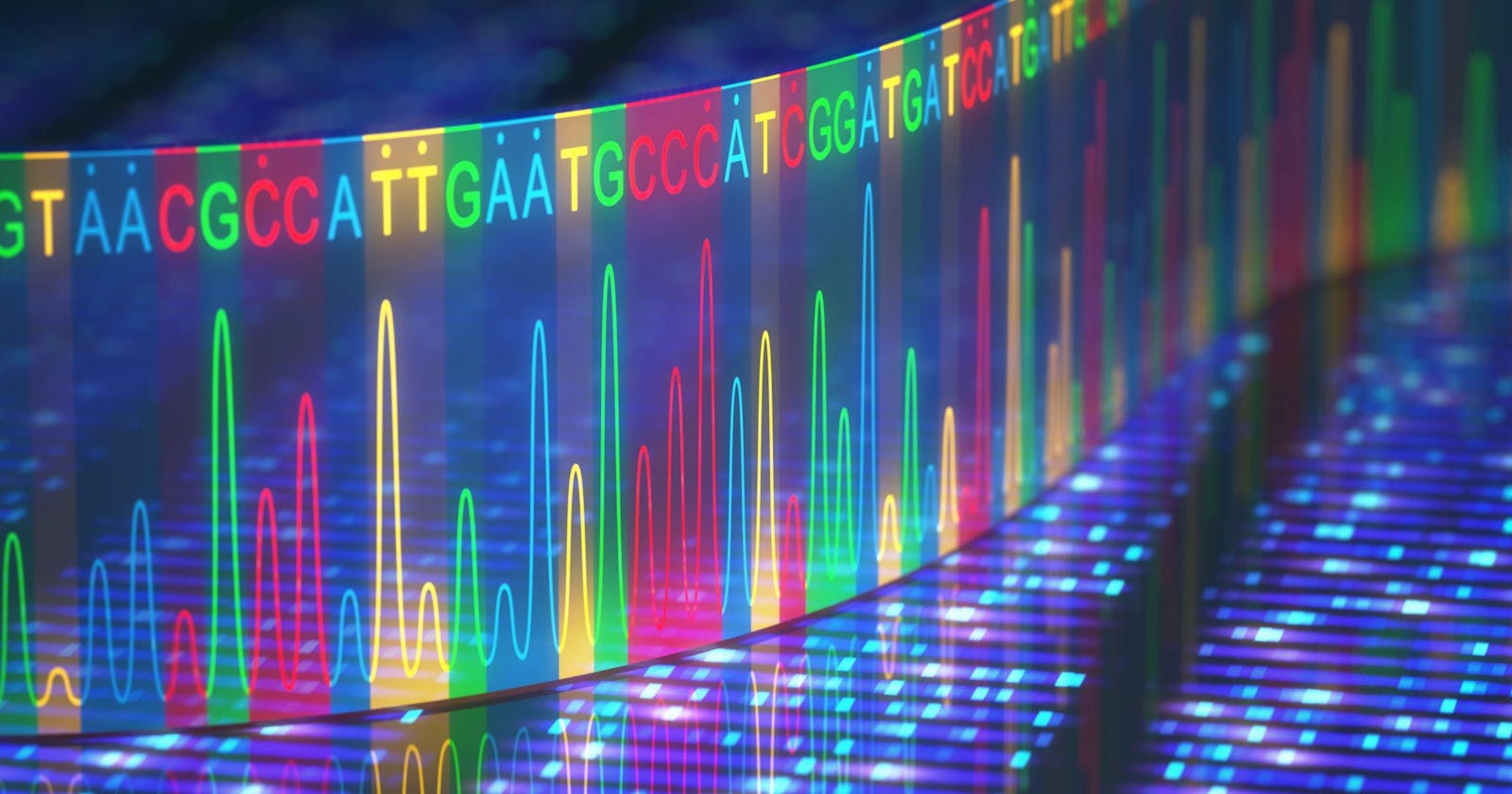what is next-generation sequencing?
it is a technology for determining the sequence of DNA or RNA to study the genetic variation associated with diseases, it is a sequencing method where millions of sequencing reactions are carried out in parallel, increasing the sequence throughput.
History
the sequence of nucleotides in DNA molecules can determine in multiple ways, early 1970s, biochemists(Drs. Walter Gilbert and Fredrick Sanger) devised different methods to sequence DNA.
Gilbert's method depends on chemical procedures that break down DNA at every four bases. Sanger’s method depends on the DNA synthesis process. in this process, a new DNA chain is synthesized base by base using sequence information on the template. the chemically modified nucleotides, dideoxynucleotides(ddNTPs) randomly stop the synthesis process.
what are ddNTPs?
is used in sanger sequencing, also known as chain-termination sequencing, is used as a substance to stop the synesis of DNA because of its lack of a free hydroxyl group needed for DNA replication. it is used to produce different lengths of DNA strands.
over the years the sanger sequencing method was further developed. developments were in:
the integration of automation into the process reducing human involvement and improving efficiency.
the use of fluorescently labeled terminators, instead of the radioactively labeled, it is safer to operate and sequence detection of DNA chains.
the use of capillary electrophoresis(it is an analytical technique that separates ions based on their electrophoretic mobility), instead of slab gels( it is traditional way to separate large biomolecule based on their molecular sizes)
all of these improvements in the sanger method made it widely used and it has been chosen for the human genome project.
Requirements for traditional sanger sequencing:
DNA polymerase enzyme.
A primer is a short piece of single-stranded DNA that binds to the DNA to the DNA template and acts as a starter for the polymerase.
the four DNA molecules (ddATPs, ddTTps,ddGTps,ddCTps) each labeled with a different color.
DNA tamplate

Method:
the ingredients are put in four tubes, four separate reactions.
the mixture is heated first to denature the double helix DNA (to separate the two strands, unfolded), then cooled to make the primer bind to the single-stranded template.
the DNA polymerase doesn't distinguish between dNTPs and ddNTPs each time a ddNTP is incorporated, in this case, ddATP synthesis is "terminated" and a DNA strand of a discrete size is generated.
because billions of DNA molecules are present, the elongation reaction can be terminated at any adenine position. this results in collections of DNA strands of different lengths. the same is true for the other three terminator reactions.
each reaction is then loaded into a separate lane of polyacrylamide gel containing urea to prevent DNA strands from renaturing during electrophoresis.
ionized phosphate gives the DNA molecule a negative charge so DNA molecules move toward the positive pole of the electric field.
shorter DNA molecules will move down the gel than the larger ones.
after electrophoresis, the gel Is sandwiched against X-ray film. the radioactive adenine in the synthesis DNA emits beta particles that expose the film, making a record of the positions of DNA bands in the gel.
the sequencing gel than is read from the bottom to the top. the sequence of the band in the various terminator lanes gives the sequence of nucleotides in the template DNA.
